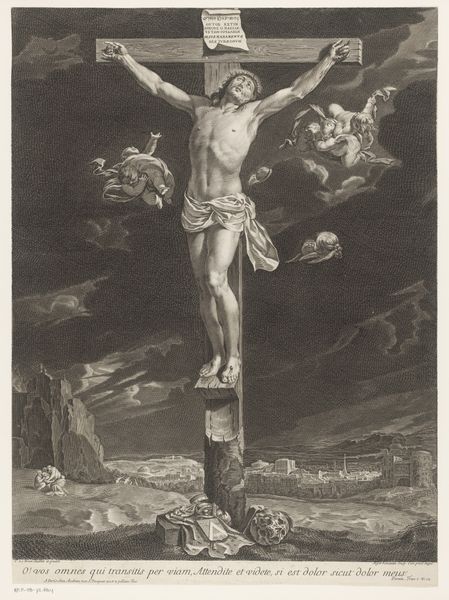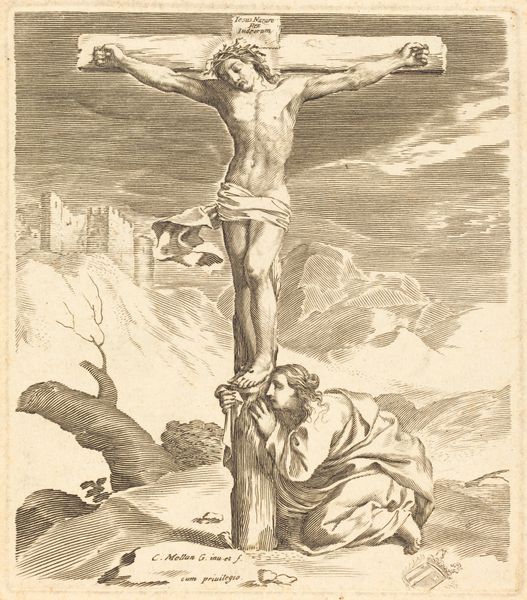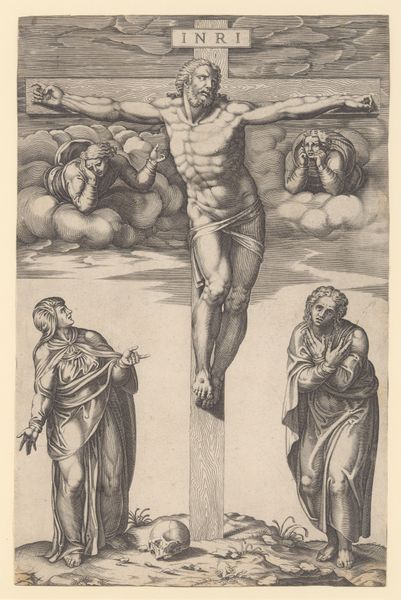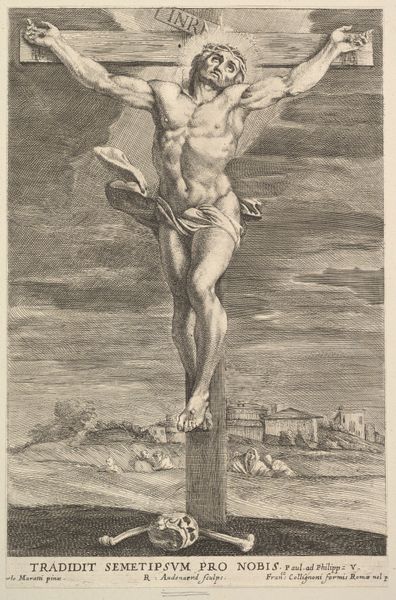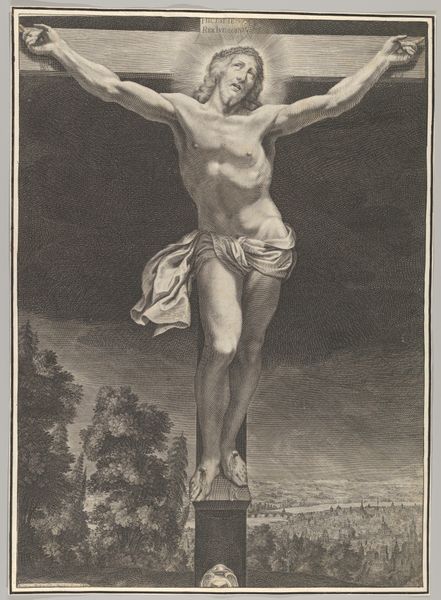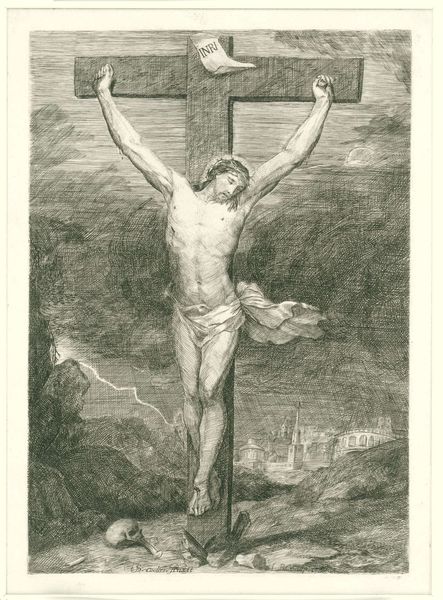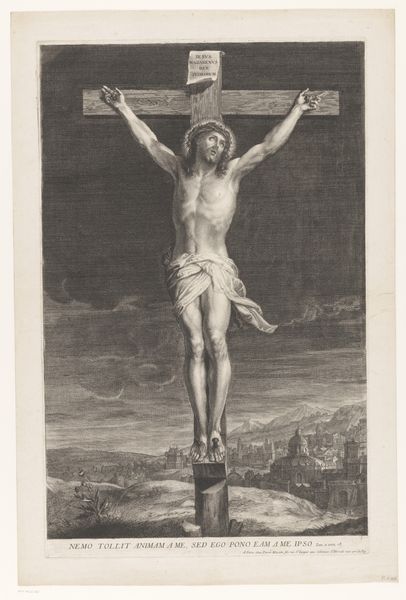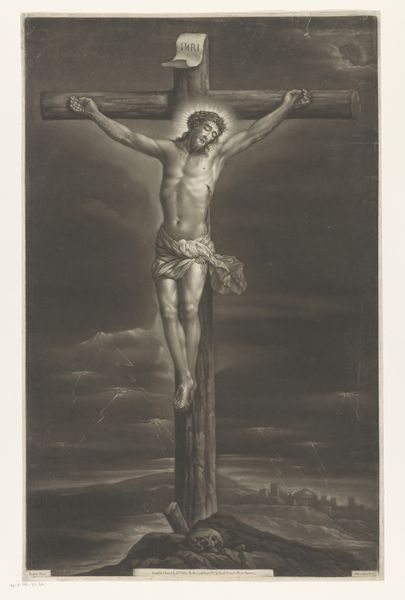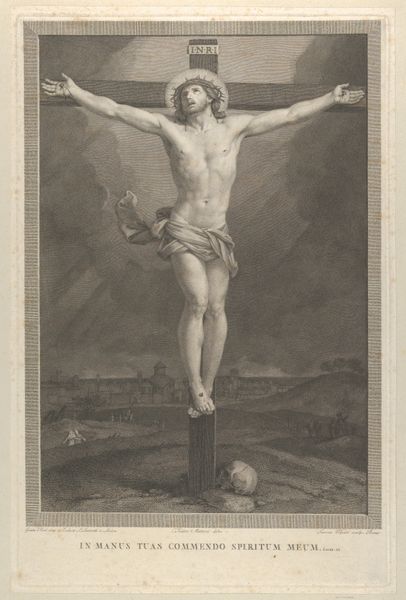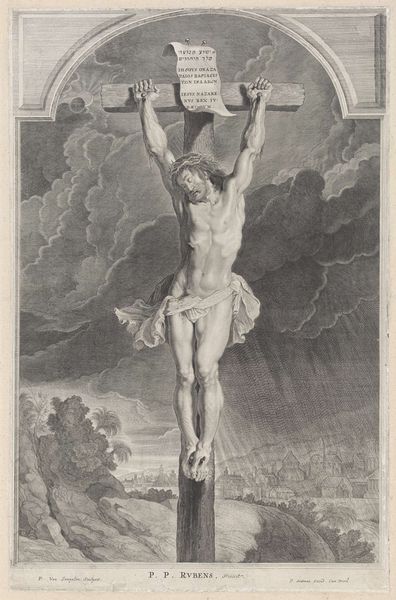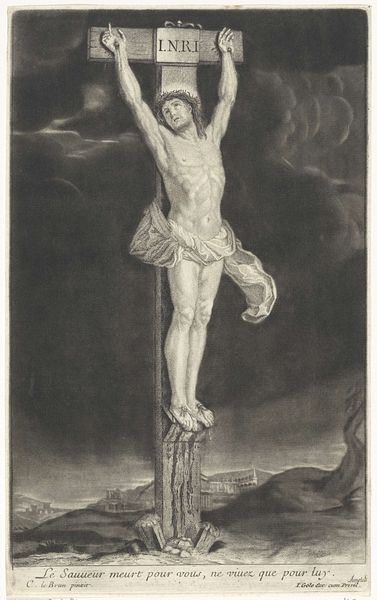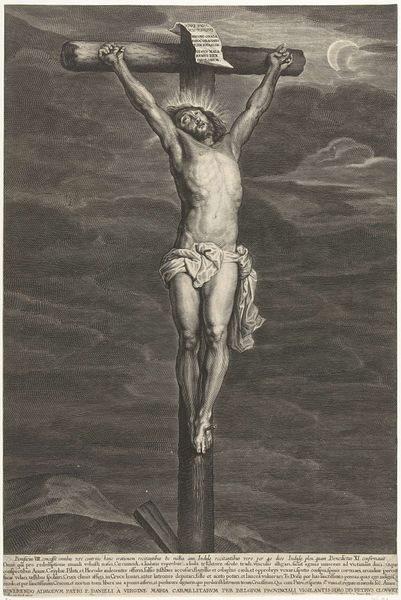
Dimensions: sheet: 48.7 x 24.7 cm (19 3/16 x 9 3/4 in.)
Copyright: National Gallery of Art: CC0 1.0
Editor: This is "The Crucifixion," an engraving by Annibale Carracci from 1581. The figure of Christ dominates the composition, almost bursting out of the frame. It has an immediate feeling of powerful grief. How do you interpret this work through the lens of imagery and symbols? Curator: Notice how Carracci blends classical figuration with Baroque drama. Consider the visual weight, almost palpable, conveyed through the cross-hatching and the muscular, almost straining physique of Christ. The skull at the base—a potent symbol. Editor: Is it the symbol of mortality? Curator: Indeed. A vanitas emblem. In Christian iconography, it directly references Adam, original sin, mortality. The engraving technique, though seemingly simple, amplifies this. How does the lack of color affect your interpretation? Editor: It heightens the sense of austerity. A solemn declaration? Curator: Exactly. And the turbulent sky, a backdrop mirroring Christ’s inner torment, recalls centuries of symbolic language in religious painting. It suggests divine drama. What feelings do these symbols evoke within you? Editor: It evokes a mix of pity and awe, making me think about sacrifice, mortality, and redemption. Seeing these recurring symbols reminds me that art doesn't exist in a vacuum. Curator: Precisely. Visual symbols weave a tapestry of collective memory, transcending time and place, stirring the same emotions across generations. We internalize symbols; we don’t merely see them. They see *us.*
Comments
No comments
Be the first to comment and join the conversation on the ultimate creative platform.

